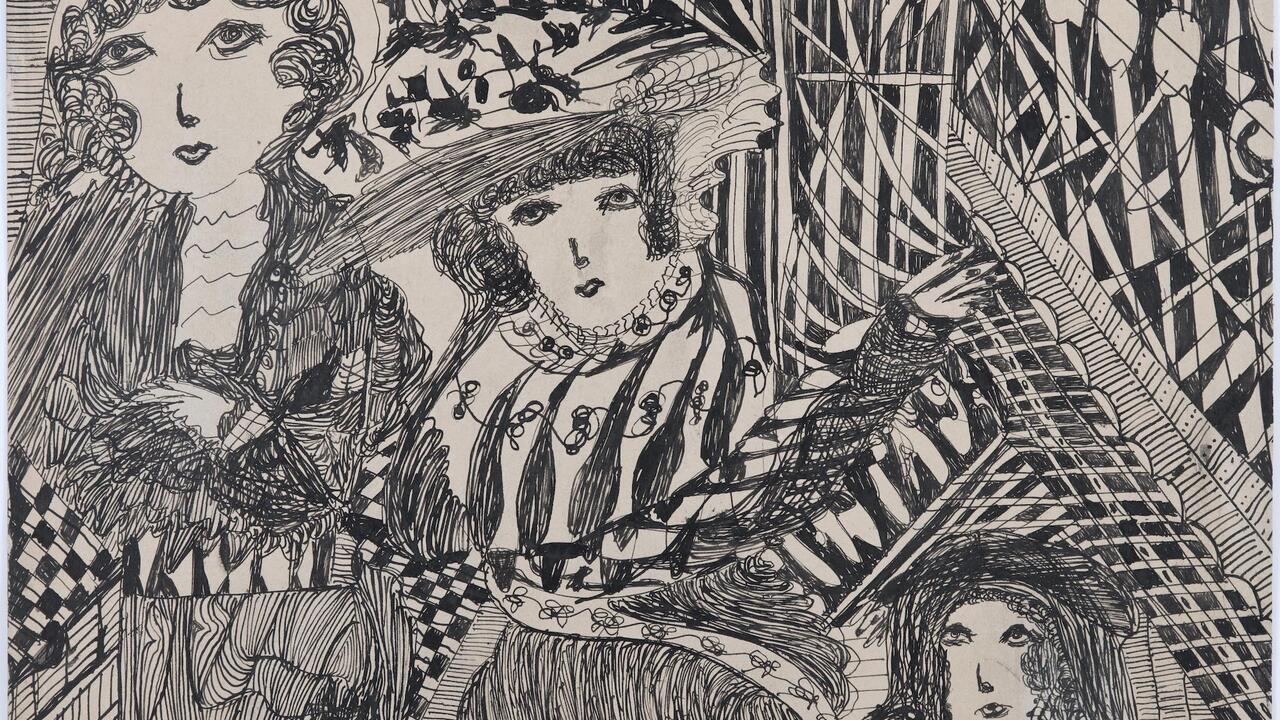The Performative Abstraction of Dansaekhwa
The postwar Korean painters focused on the very process of making, not just the rejection of figuration
The postwar Korean painters focused on the very process of making, not just the rejection of figuration

To the untrained eye, a dansaekhwa painting might appear deceptively simple – a canvas suffused with muted tones, its faint brush strokes or subtle textural variations barely perceptible at first glance. These seemingly monochromatic works, often rendered in shades of white, beige, or earthy tones, are distinguished not only by their palette but by their diverse approaches and textures.
Park Seo-Bo uses repetitive pencil strokes in his ‘Ecriture’ series; Ha Chong-Hyun presses paint through the canvas from the reverse side; Yun Hyong-keun's paintings, with their deep ultramarine and umber tones, evoke traditional Korean aesthetics through layered, luminous surfaces; and Chung Chang-Sup manipulates hanji, Korean mulberry paper, creating textured works that balance artistic intervention and natural processes. Despite the variety of techniques, the works of all these artists invite profound engagement.

Dansaekhwa, meaning 'monochrome painting' in Korean, emerged in the 1960s, a period when South Korea was experiencing rapid industrialization and the early stages of political turmoil that would continue for decades. Amid this chaos, some artists turned inward, searching for a mode of expression that could transcend the unrest of their times. Their approach emphasized materiality, process, and the physical act of artistic production.
Across the Korea Strait in Japan, mono-ha artists were experimenting with natural and industrial objects, while in Europe, arte povera was challenging traditional notions of artistic value with humble, everyday materials. While these parallel artistic trends gained recognition in the West, dansaekhwa remained largely overlooked. Pioneers such as Park Seo-Bo, Lee Ufan, Chung Sang-Hwa, and Ha Chong-Hyun continued refining their techniques in relative obscurity. These artists shared an intense focus on the creative process itself, often involving repetitive, meditative practices that imbued the finished pieces with a profound sense of time and presence.

The tide began to turn for this artistic approach in the 21st century, with the exhibition 'Dansaekhwa: Korean Monochrome Painting' in 2012 at the National Museum of Modern and Contemporary Art (now MMCA) in Seoul and the publication of art historian Joan Kee's book on the subject the following year. These events ignited significant global interest, positioning dansaekhwa at the forefront of critical attention throughout the 2010s. Its works soon graced major international museums and private collections worldwide. The art market responded enthusiastically, with prices surging amid a wave of exhibitions and acquisitions.
What sets dansaekhwa apart from other abstract art movements is its profound connection to Eastern philosophy and aesthetics. The emphasis on process over outcome, the meditative aspect of creation, and the harmony between artist and materials all reflect East Asian cultural traditions. Chung Sang-Hwa's meticulous process of applying, removing, and reapplying layers of paint exemplifies this approach, with the repetitive act itself becoming a contemplative practice. In a dansaekhwa work, the canvas is transformed into a site of performance, recording the artist's actions and intentions over time.
In a dansaekhwa work, the canvas is transformed into a site of performance.
The intense fervor that surrounded dansaekhwa in the 2010s has waned. This shift does not signify a decline but a transition from novelty to deeper integration, as critics and collectors continue to grapple with the broader implications of the movement's belated recognition. This period of reflection coincides with a poignant moment for dansaekhwa, as many of its key figures have reached their twilight years. The recent passing of Park Seo-Bo, a founding artist of the movement, marks the end of an era and underscores the urgency of appreciating and documenting this pivotal artistic movement.
The reassessment of dansaekhwa is part of a global effort to rewrite art history from diverse perspectives, an endeavor increasingly evident in key international exhibitions and in the collections of major institutions. These platforms are actively working to challenge the often-assumed unidirectional flow of artistic influence from West to East. As we continue to engage with dansaekhwa, we find it offers more than just a chapter in art history; it provides a bridge between Eastern and Western artistic traditions, between conventional practices and innovation.

The impact of this movement extends far beyond Korean art, opening doors for the recognition of overlooked artistic expressions from Asia, Africa, Latin America, and beyond. The legacy of dansaekhwa will be measured not just in the beauty and power of its works, but in its contribution to this broader shift in our understanding of global art history. It stands as a testament to the enduring power of artistic expression to transcend cultural and temporal boundaries, reminding us that significant art can emerge from any context, and that our appreciation of creative achievement must continually evolve to encompass the full richness of artistic diversity.
This article first appeared in Frieze Masters, London 2024 under the title ‘Abstract Worlds: Dansaekhwa’.
Further Information
Frieze London and Frieze Masters, 9 – 13 October 2024, The Regent’s Park.
Limited early bird tickets are on sale – don’t miss out, buy yours now. Alternatively, become a member to enjoy premier access, exclusive guided tours and more.
To keep up to date on all the latest news from Frieze, sign up to the newsletter at frieze.com, and follow @friezeofficial on Instagram, X and Frieze Official on Facebook.
Main image: Chung Chang-Sup, Tak 88002, 1988, Tak fiber on cotton, 97 × 131 cm. Courtesy: © The Estate of Chung Chang-Sup and PKM Gallery, Seoul























